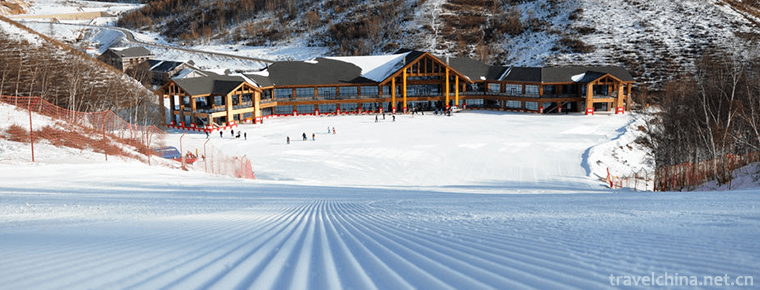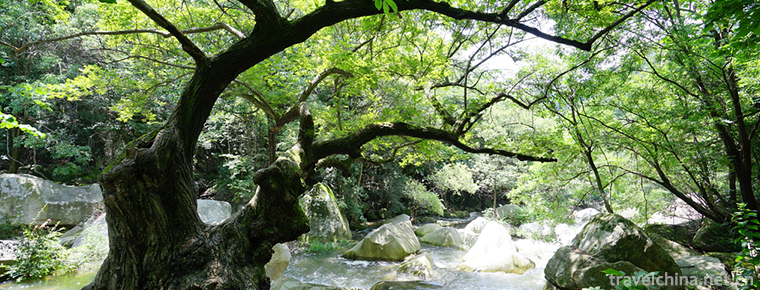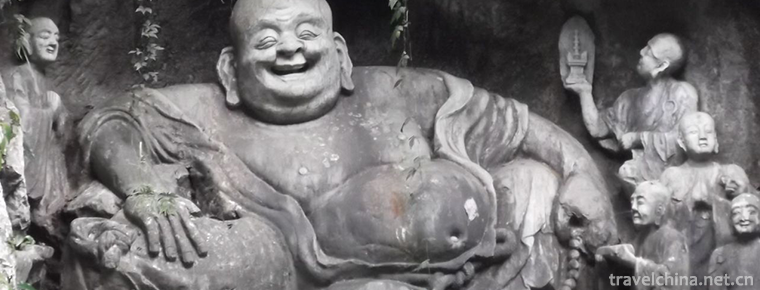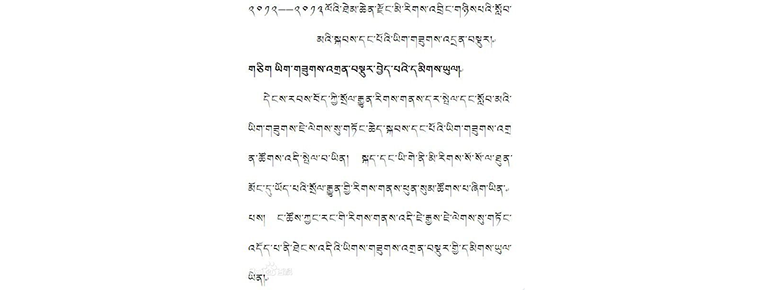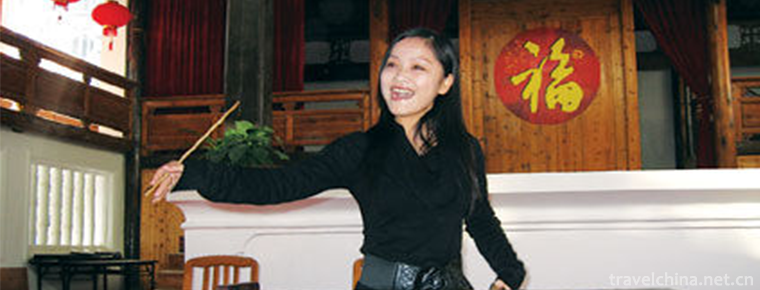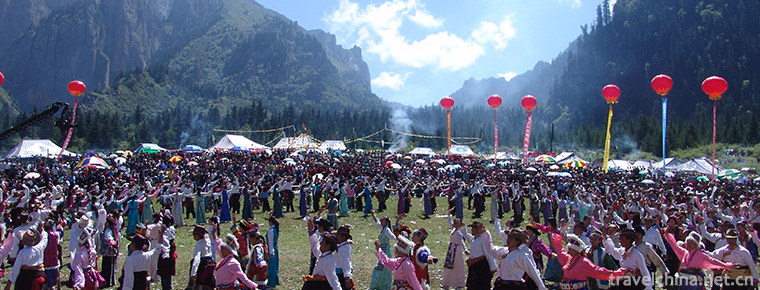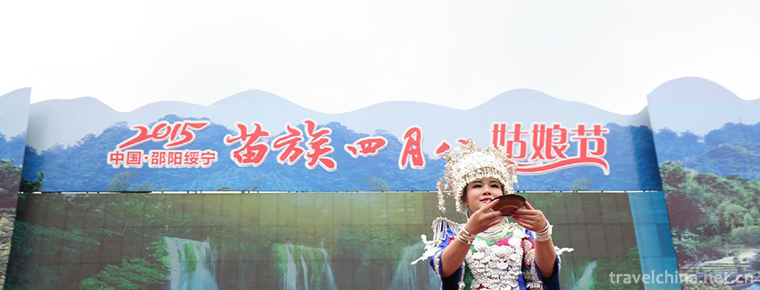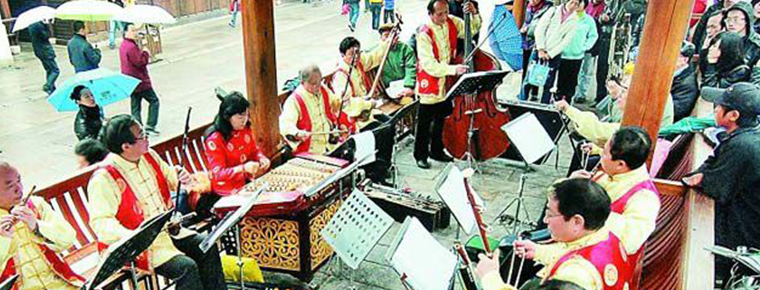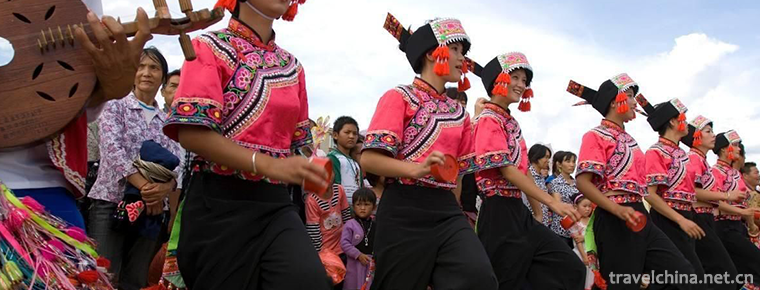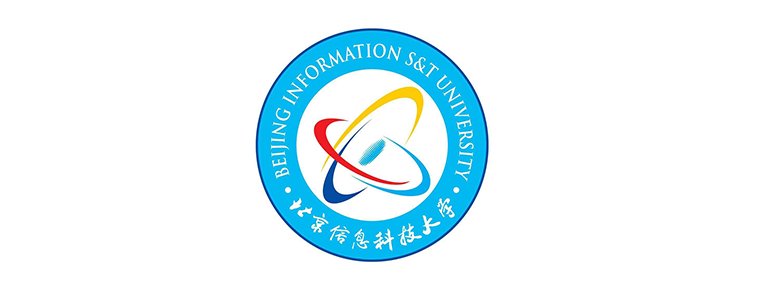Achi Wood Scraping of Lisu Nationality
Achi Wood Scraping of Lisu Nationality
"Aqimuguo" is a kind of self-entertaining dance for the masses, which is spread in the upper reaches of the Cangjiang River with Yezhi Township as the center. Its characteristics are that it does not need musical instruments, sings and dances from beginning to end. The music is composed of leading singers and accompanying singers. The dancers are divided into two groups, one leader in each group, and the rest of the choruses are very rich in content. They can sing from the myths and legends of ancient Honghuo to the production and life around them. They can inherit the lyrics left by their predecessors, or compile and sing by themselves improvisely. If the leaders of the men's and women's teams are equal, they often sing "eye-catching" for several days and nights.
On May 20, 2006, the Lisu Ajimu scraping was approved by the State Council of the People's Republic of China to be included in the first batch of national intangible cultural heritage list, the heritage number: III-35.
historical origin
"Aqimu Scrape", translated into "Goat's Song and Dance" in Chinese, is a kind of self-entertainment and self-entertainment song and dance popular among Lisu people along the Lancang River in Weixi County, Yunnan Province. Tongle Village in Yezhi Township, Weixi County, is the hometown of "Aqimu Scrape".
The origin and formation of Aqimu scraping are related to the Lisu people's semi-farming and semi-pasturing, especially their love of raising goats. The tunes are deep and far-reaching, such as the long song of goats, the melodious tone and the changeable dance steps. A Chi wood scraper is characterized by not using musical instruments, singing and dancing from beginning to end, combining music with lead singing and accompaniment singing. The two groups of dancers, male and female, each in a semicircle or in a straight line, singing while dancing, with one leading singer, all singing together in the last sentence. The dancing movements imitate the movements of goats, such as footsteps, swaying and rubbing of the upper body, swinging forward, looking up and looking back. Characteristic.
In primitive society, at the end of Lisu's hunting, people gathered together to sing and dance, to express group feelings, to express joy and good wishes after harvest of labor. According to Xiong Ziyi, the national representative inheritor of Aqimu Scrap, the early stage of Aqimu Scrap (clan society) only sang at sacrifices, and then gradually extended to the occasions of New Year's Day, marriage and funeral, and underneath work. This change clearly confirms the process of folk song culture from holy to secular.
Since the mid-1980s, Aqimu scraper has been widely praised by the audience since it started to walk out of the countryside and jump to the county and state capitals.
In September 1997, at the 40-year festival of culture and art held by Diqing Tibetan Autonomous Prefecture and adjacent Tibetan areas, Ajimu scraper won the gold medal. Since then, more and more people have appreciated the charm of Aqimu scraper. Aqimu scraper is the preferred program for all important performances. By the beginning of the 21st century, only some old people can dance in some traditional dance routines.
In contemporary times, Ajimu scraping is widely used in villages and villages in Yezhi Township, which has become the content of activating the cultural life of the people of all ethnic groups in mountainous areas and carrying out the construction of spiritual civilization. During the festival or harvest season, Lisu mountain villages in high mountains and deep valleys are full of bonfires and bright lights. People of all nationalities join hands and jump up "Achee Wood Scrape", singing the nature that gives human life, the sunshine, the moon, the stars and the stars that bring light to the earth, singing the happy life of Wugu Fengdeng and herds of cattle and sheep.
Dance features
Dance movements
The dance of "Aqimu Scrape" is a kind of dance action formed by extracting and processing the dynamic image of goats. It mainly adopts the method of simulation and symbolization. The imitation itself has its own purpose, that is, "Aqimu Scrape" uses the dynamic image of goats to express certain emotional, ideological and personality characteristics of human beings. The "Aqimu Scraping" dance is mostly a direct external performance. The movements are mainly composed of the jumping and swaying of feet, the swaying of the upper body and the receiving and receiving of the buttocks, the forward bending, the looking up and the looking back. The main movements are: jumping swing step, stamping step, forward stamping step, backward stamping step, sheep's head up, footboard opposite, heeling, stamping, shoulder touching, buttock touching, etc.
Dance formation
"Aqimu Scrape" dance formation usually has large circles, straight columns, semi-circular arcs, curves and so on. Usually the dance team turns clockwise. According to the concepts of venue and implication, the dance formation of "Aqimu Scrape" inevitably contains certain significance. The dance of "Aqimu Scrape" is very formative, and the general dance form is characterized by walking formations. Lisu people generally live in mountainous or semi-mountainous areas. The formation of Ajimu Scraping Dance Stadium was originally formed in such a mountainous area. It evolved from simple formation to complex formation.
distinguishing features of music
The dance of "Aqimu Scrape" has no accompaniment of musical instruments. From beginning to end, it dances on foot songs. The music is composed of lead singing and chorus. The whole music imitates the goat's song as the tone, and mostly appears as tremolo. Its tune can be slow and rapid. The beat of notes is frequent and large. Especially when the music begins, the first sound is long and long, and the tone is tortuous and changeable, giving people a sense of free stretching. It's like being on a high mountain pasture, like having a friendly conversation with a goat. The lyrics of "Aqimu Scrap" are very rich, involving all aspects of Lisu production and life. Such as the traditional marriage etiquette of the Lisu nationality, the establishment of a new family, the birth of children, the reproduction of human beings and family morality of the fashion education, including the teaching of sheep and other production skills.
Clothing characteristics
The costumes of the dancers are very unique. According to the record of "Visi Wenwenlu" written by Yu Qingyuan, when performing "Ashi Wood Scrape", the "men wear hairpins while wearing hairpins, and the braided wheat straw is embellished in the hair hall, often with sharp edges. Women pull hair hoops, collars, skirts and pants. This unique costume is rare nowadays. The Lisu people in Yezhi Town are the only ones who still keep "weaving wheat straw as a decoration in hairpin" in the performance of "Achimu Scraping".
Inheritance and Protection
Inheritance value
The essence of the cultural inheritance of "Aqimu Scraping" dance is the inheritance of Lisu cultural spirit. The root of Lili folk dance culture is the increasingly profound and sublimated Lili culture with the development of Lisu society. Ajimu scraping dance is the manifestation of life rhythm and the image of group leaping. The dance style of Ajimu scraping of Lisu nationality is thick, powerful, rough and bodybuilding, which embodies the character characteristics of Lisu nationality, such as honesty, simplicity, courage, enterprising, optimistic and open-minded. It also embodies the basic spirit of Lisu people's self-improvement, unity and progress, and breeds new creations corresponding to the times.
Heritage figures
Xiong Ziyi, male, Lisu nationality, born in Weixi County, Yunnan Province in 1941. The second batch of national intangible cultural heritage projects, the representative successor of Lisu Ajimu scraper, was declared by Weixi Lisu Autonomous County, Yunnan Province.
Li Biqing, male, Lisu nationality. The fifth batch of state-level intangible cultural heritage projects, representative inheritors of Lisu Ajimu scraper, were declared by Weixi Lisu Autonomous County, Yunnan Province.
protective measures
In 2008, the Weixi County Cultural Museum established a training center in the village public office where the staff of Tongle Village in Yezhi Town were relatively concentrated (mainly organizing festival activities and carrying out the inheritance work of "Ajimu Scrap" song and dance in the local area).
From 2011 to 2013, the Cultural Museum of Weixi County has established three training sites in Xinluo Village, Badi Township and Comp Township, Yezhi Township, respectively, to organize artists at all levels to carry on the inheritance of "Aqimu scraper", strive to cultivate new inheritance force, and further develop the archives and materials of "Aqimu scraper" such as singing and dancing forms, genres, lyrics, singing, inheritance personnel structure, singing and dancing costumes, singing and dancing legends. Emphasis on census work.
At the beginning of 2015, with the joint efforts of the competent departments at all levels, the Lisu "Ajimu Scraping" Interpretation Center was completed in Tongle Village, Yezhi Town. The Interpretation Center consists of Multimedia Electronic Exhibition hall, cultural tradition exhibition room and heritage activity center.
social influence
Important performances
On January 17, 2017, in Zhenpo Square, Badi Township, Weixi County, Lisu Achimu Scrape was displayed during the exhibition of protection and inheritance achievements of Lisu "Achimu Scrape" and the opening ceremony of the 7th Badi Township Ethnic Folk Literature and Art Festival.
On December 22 and 23, 2017, during the "Wide Time Festival in Weixi County and the 3rd Acer Scraping Festival in Yezhi Town", Lisu Acer Scraping was displayed.
Honorary recognition
In September 1997, at the 40-year festival of culture and art held by Diqing Tibetan Autonomous Prefecture and adjacent Tibetan areas, Ajimu scraper won the gold medal.
In 2009, Li Biqing's performances of "Aqimu Scraping Wine Song", "Aqimu Scraping Dance", "Shepherd Girl" and "Love Song Singing" won excellent prizes in the first Lisu folk original ecological song and dance performance.
In 2011, the National Song and Dance Troupe of Weixi County participated in the "New Song and New Dance Exhibition Competition" held by Diqing Prefecture, and its performance of "Ajimu Scrap" won the gold medal.

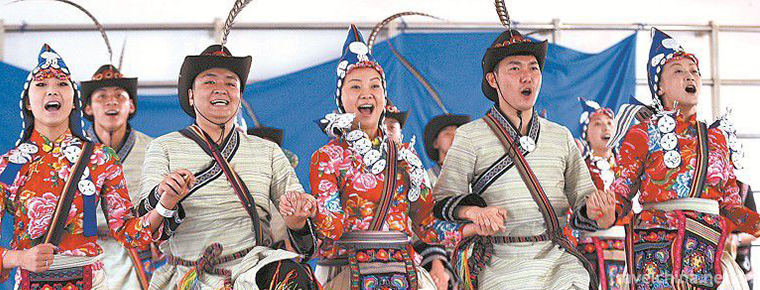
Achi Wood Scraping of Lisu Nationality
-
Miyuan Yunding Paradise
Miyuan Yunding Paradise Park is located in Chongli District, Zhangjiakou City, Hebei Province, 220 km from Beijing, only 50 minutes after the completion of the high-speed railway
Views: 174 Time 2019-02-07 -
Longtan Valley Ecological Scenic Spot in Xixia
Longtanggou Natural Ecological Scenic Area is located in Shuanglong Town Huashan Village, Xixia County, the hinterland of Funiu Mountains, Henan Province. It is 30 kilometers away from Xixia County
Views: 240 Time 2019-02-25 -
The Legend of the Cloth Bag Monk
From the end of Tang Dynasty to the Five Dynasties, the monk of Fenghua, Ningbo City, Zhejiang Province, named Tingzi, was an eminent monk of Hou Liang in the Five Dynasties
Views: 422 Time 2019-04-04 -
Tibetan calligraphy
Tibetan calligraphy is an important part of Tibetan culture and art. In the seventh century AD, during the Zampson Zangganbu period of Tubo, minister Tunmi Sampuza absorbed the advantages of different
Views: 177 Time 2019-04-05 -
Fuzhou Reviews
Fuzhou dialect commentary is a unique traditional form of storytelling in Fuzhou dialect of Fujian Province, which is popular in Fuzhou, Fujian Hou, Yongtai, Changle, Lianjiang
Views: 145 Time 2019-04-30 -
Pot dance
Guozhuang dance, also known as "Guozhuo", "Gezhuang", "Zhuo" and so on, is one of the three major Tibetan folk dances. Guozhuang Dance is distributed in Changdu and Naqu
Views: 170 Time 2019-05-02 -
April Eighth Girls Day of Miao Nationality
"Girl's Day" originated in memory of Yang Bamei, a heroine. Legend has it that in the Northern Song Dynasty, Yang Wenguang, a famous general, was ordered to be plain and barbarous. After def
Views: 217 Time 2019-06-05 -
Ten times of music
Shifan music is a traditional instrumental music spread by Hakkas in Fuzhou and Western Fujian Province. It has been circulated since the middle of Daoguang in the Qing Dynasty. The origin of Shifan m
Views: 334 Time 2019-06-15 -
Yi Peoples Cigarette Box Dance
Yi cigarette box dance, the traditional dance of Hani Yi Autonomous Prefecture in Honghe, Yunnan Province, is one of the national intangible cultural heritage.
Views: 196 Time 2019-07-12 -
Cai Lun
Cai Lun(?-121 years ) Zhong Zhong, a member of Guiyang County in Eastern Han Dynasty. Emperor Ming of Han Yongping entered the palace in the end, Zhang and two years (AD 88). Cai Lun was promoted to t
Views: 321 Time 2019-09-06 -
Beijing Information Science And Technology University
Beijing Information Science and Technology University (Beijing Information Science and Technology University), located in Beijing City, is a city with a coordinated development of engineering, managem
Views: 177 Time 2019-09-21 -
Shihaidong scenic spot
Shihaidong scenic spot is located in Xingwen County in the south of Sichuan Province. Because the stone forest and karst caves in the county are distributed in 17 townships, it is known as "stone sea cave town".
Views: 332 Time 2020-10-16
